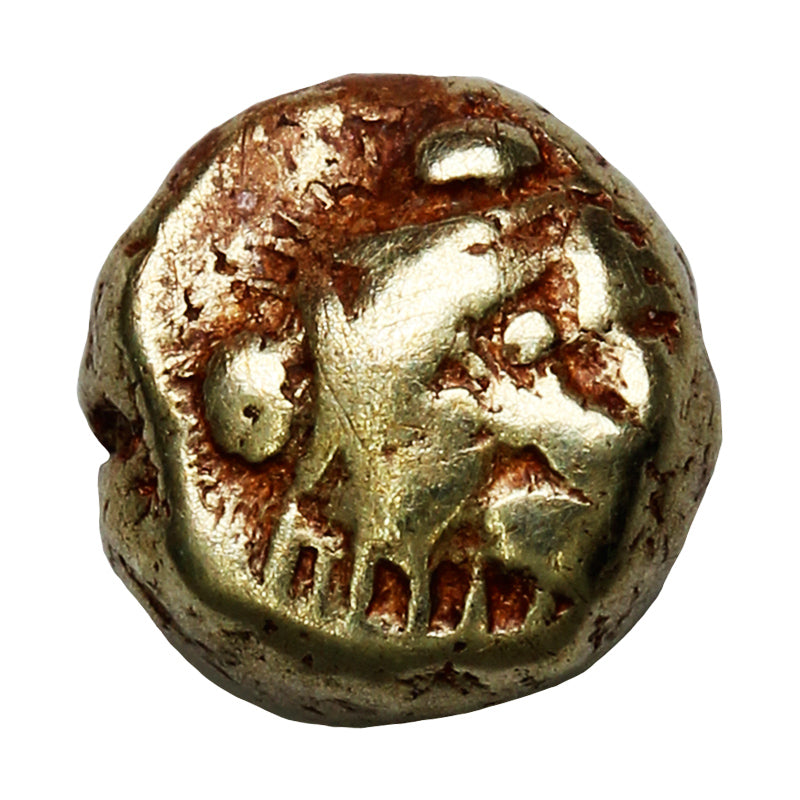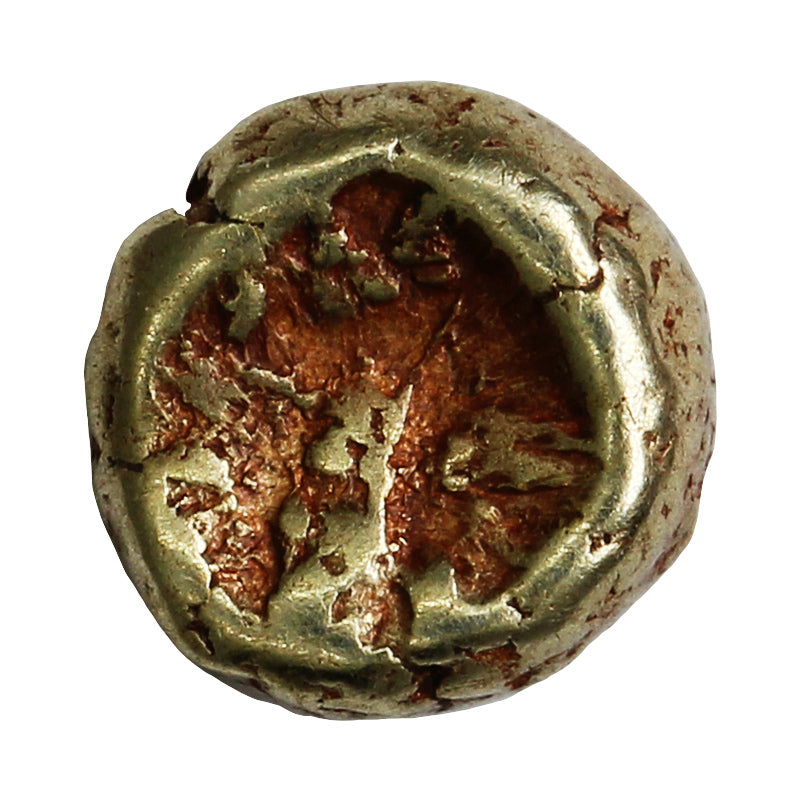Colonial Acres Coins
SKU: SKU:AC-0301
Ancient Ionia 560-545BC Miletos Lion Head Electrum 1/24th Stater Extra Fine (EF40)
Ancient Ionia 560-545BC Miletos Lion Head Electrum 1/24th Stater Extra Fine (EF40)
Regular price
$600.00
Regular price
Sale price
$600.00
Unit price
per
We buy at $0.00
◎ 1 Available
Couldn't load pickup availability

FREE SHIPPING OVER $500
Ancient Ionia 560-545BC Miletos Lion Head Electrum 1/24th Stater Extra Fine (EF-40)
The very first coins known to history are widely believed to be the electrum staters struck in Ionia (modern-day western Turkey) around 650 BC. These coins were made from electrum, a naturally occurring alloy of gold and silver found in riverbeds of the region, especially in the Pactolus River.
The Lydians and Ionian Greeks—living in close contact—are both contenders for being the inventors of coinage, but archaeological finds suggest that the earliest pieces were struck in Ephesus or nearby Ionian cities under the influence of the Lydian kingdom. The coins were typically bean-shaped or irregularly oval, stamped with a simple punch mark or emblem on one side and a rough incuse punch on the other.
These first staters weren’t intended for small purchases—each one represented substantial value and was likely used for state payments, large-scale trade, and mercenary wages. The use of electrum posed challenges since the gold-to-silver ratio varied naturally, making their intrinsic value somewhat uncertain, but their acceptance was based on the authority of the issuing city or ruler.
In many ways, these humble electrum lumps—bearing the earliest symbols of political or religious power—set the stage for the entire history of coinage that followed.
The very first coins known to history are widely believed to be the electrum staters struck in Ionia (modern-day western Turkey) around 650 BC. These coins were made from electrum, a naturally occurring alloy of gold and silver found in riverbeds of the region, especially in the Pactolus River.
The Lydians and Ionian Greeks—living in close contact—are both contenders for being the inventors of coinage, but archaeological finds suggest that the earliest pieces were struck in Ephesus or nearby Ionian cities under the influence of the Lydian kingdom. The coins were typically bean-shaped or irregularly oval, stamped with a simple punch mark or emblem on one side and a rough incuse punch on the other.
These first staters weren’t intended for small purchases—each one represented substantial value and was likely used for state payments, large-scale trade, and mercenary wages. The use of electrum posed challenges since the gold-to-silver ratio varied naturally, making their intrinsic value somewhat uncertain, but their acceptance was based on the authority of the issuing city or ruler.
In many ways, these humble electrum lumps—bearing the earliest symbols of political or religious power—set the stage for the entire history of coinage that followed.









